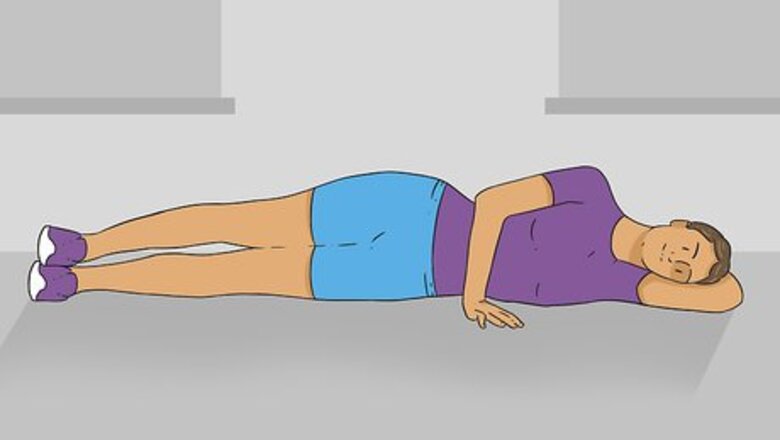
views
Doing Lateral Leg Raises
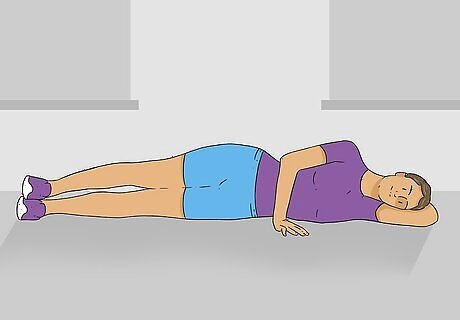
Lie on the floor on your right side. Make sure your lower body, from waist to ankle, is completely straight. The leg raise is well suited for working the stabilizer muscles in your quads, such as the rectus femoris.
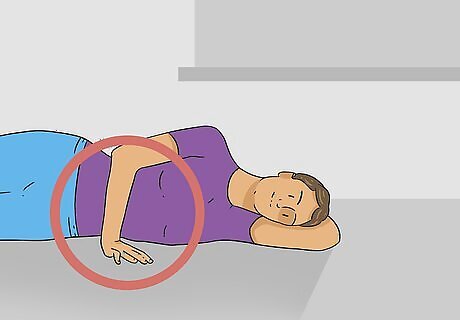
Place your left arm forward, resting your palm on the ground. This will help you stay balanced throughout the exercise. You can lay your head on your right arm to get more comfortable. Alternatively, you can prop yourself up on your elbow, though you want to be sure you keep the straight line from your hips down to your ankles.
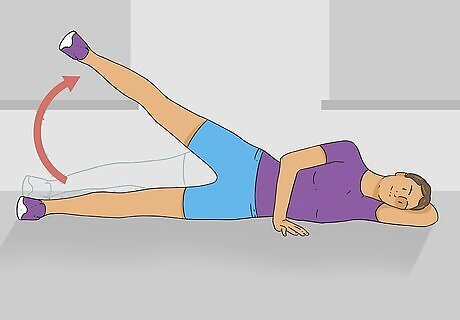
Lift your left leg in the air slowly. Lift your leg until it reaches about a 45 degree angle. Keep your abs tight as you lift: this will help you stay balanced and keep you from tipping over. Exhale as you lift your leg. Try to keep your leg going up in a straight line, rather than letting it drift to either side.
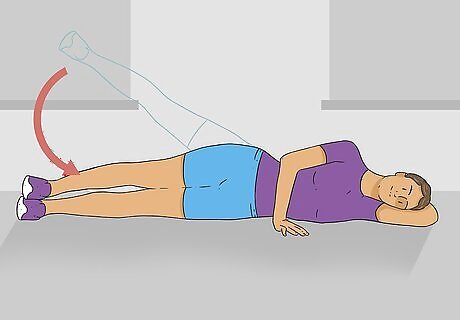
Lower your leg back to the starting position. Continue tightening your abs as you lower your leg and exhale. Lower your leg in a straight line until it touches your other leg. Exhaling as you lift and inhaling as you bring your leg back down helps control your breathing. Proper breathing is key for efficient exercise.
Hold your leg in the lifted position. You may not have enough leg mass to build a lot of muscle by simply lifting your own leg without weights. In order to build more muscle, hold the up position for 60 seconds or for as long as you can. Do 3-5 sets of this at a time.
Do the exercise quickly. Much of your quad muscle is made up of fast twitch muscle fibers, so making quick, explosively fast movements is needed to build those fibers. To do this, perform 3 sets of 20 lifts as quickly as you can.
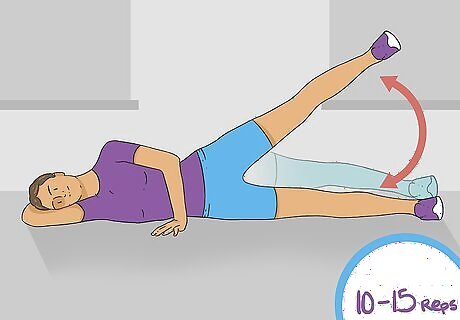
Roll over onto your left side and repeat the exercise with your right leg. You'll essentially be following the same steps, just reversed. By exercising each quad the same amount, your muscles are more likely to become equal in strength.
Using the Lunge
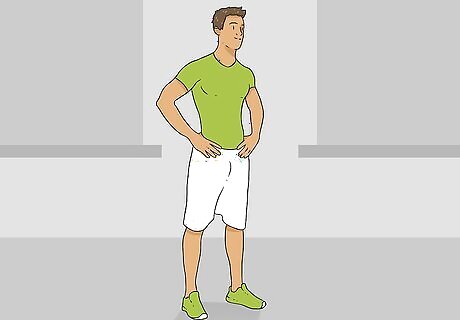
Stand with your feet shoulder-width apart. Make sure your weight is evenly distributed between both feet. You can keep your hands on your hips to improve your balance. This is the starting position, and the position you'll return to when you complete a rep.
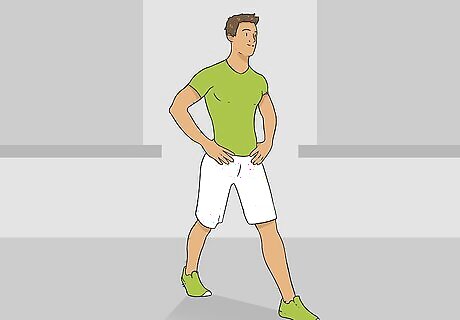
Take a step forward with your left foot. Plant your heel first, then roll the foot forward until it's completely flat. You should step far enough forward that the distance between your feet is roughly equal to twice the width of your shoulders. You should be inhaling as you step forward.
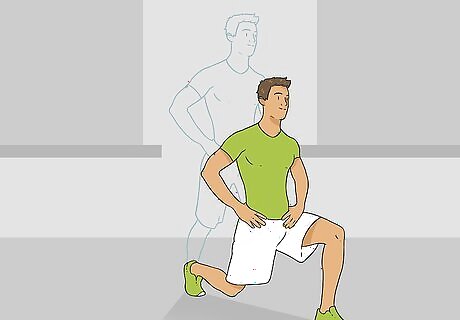
Bend your knee. Once your front foot is flat, bend your front knee until it's at a 90 degree angle. As you do this, your rear leg should bend as well, until your rear knee almost touches the ground. Keep your front knee aligned directly above your ankle.
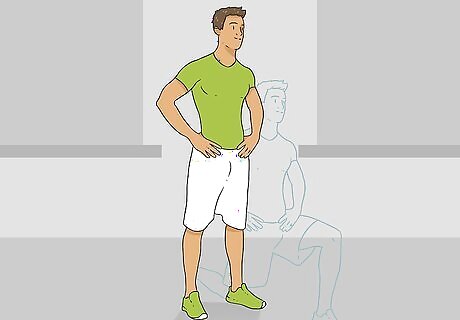
Return to the starting position. You do this by pushing off of your front foot, extending your leg as you bring it back. You should feel the front of your thigh working to push you back up. You should now stand with your feet shoulder width. This counts as one rep.
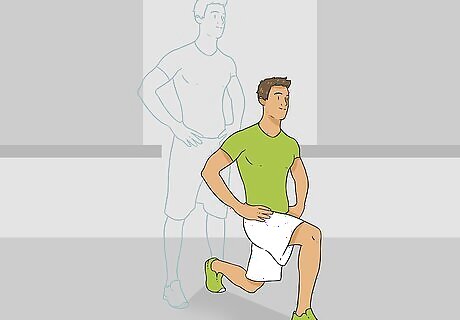
Repeat this process with the other leg. You'll be doing the exact same process, only this time with your right leg going forward. It's important to alternate this way to prevent any muscle imbalances from forming. This counts as one rep for the right leg.
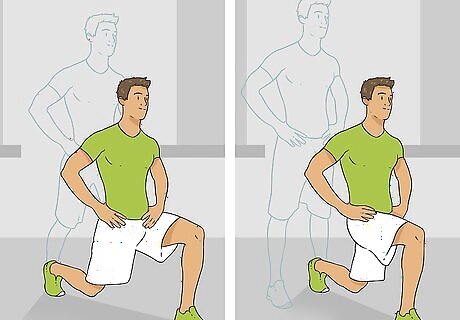
Lunge again, alternating between both legs. You should aim for 10-15 reps on each, for 2-3 sets. This will give you the best workout for strengthening your quads and improving muscle definition. If you have knee problems, or are feeling pain when you do lunges, try reverse lunges instead. The process is essentially the same, except you'll step backwards and bend the knee instead of stepping forwards
Squatting
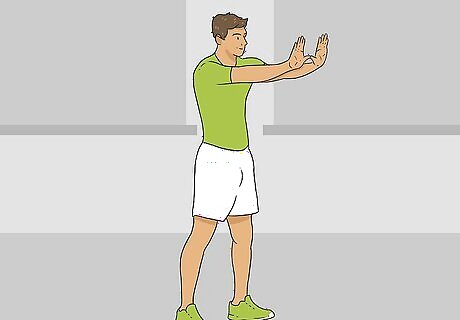
Start with your feet shoulder width apart. Point your toes slightly outwards and keep your arms at your sides. Pull your shoulders back, which will force you to keep your back straight throughout the movement.
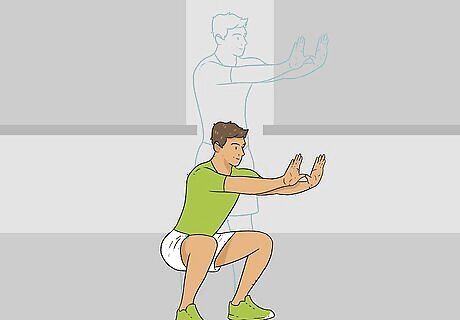
Bend your knees until your thighs are parallel to the floor. Push your butt back and down, like you're trying to sit down on a low box. Keep your abs tight. Bring your arms up in front of you to help you keep your balance and inhale. Make sure you don't let your knees go past your toes. This puts additional strain on your knees and could cause an injury. If you're not very flexible, you might not be able to reach parallel depth on your squat. That's fine, just go as far down as you can without injuring yourself.
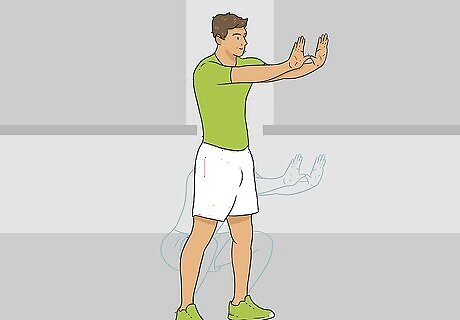
Drive through your heels to push yourself back up. Your weight should be in your heels as you push up. This will keep you from tipping over forward and putting too much strain on your knees. Extend your legs until you've returned to the starting position, with arms by your sides. Inhale on the way down, and exhale on the way up.
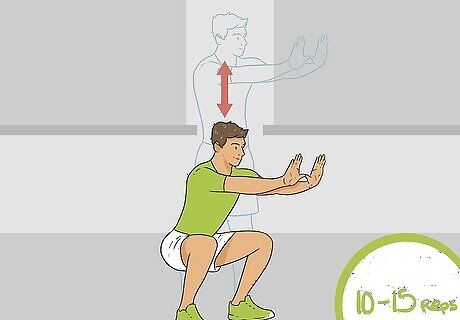
Perform 2-3 sets of 10-15 reps. This is the ideal range for a balance of strength building and muscle development. You might not be able to complete all the prescribed reps when you start, which is fine; just do what you can until you work your way up to 10 reps. If the bodyweight squat is too easy for you, try the jump squat. The movement is essentially the same, except that as you push up, you jump as high as you can.




















Comments
0 comment